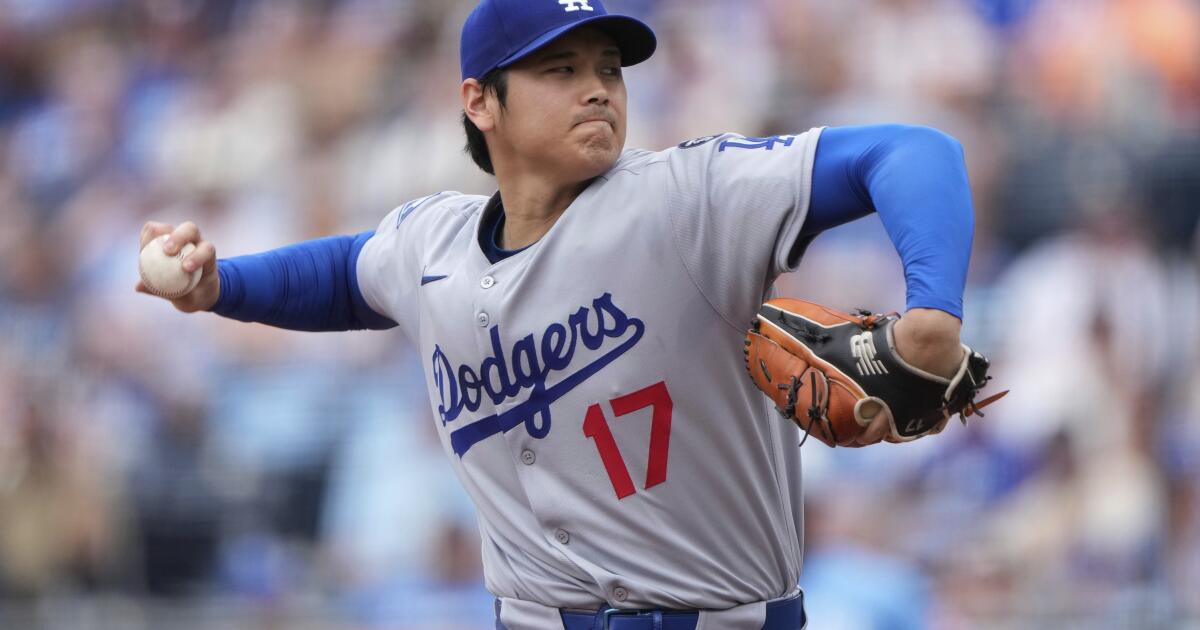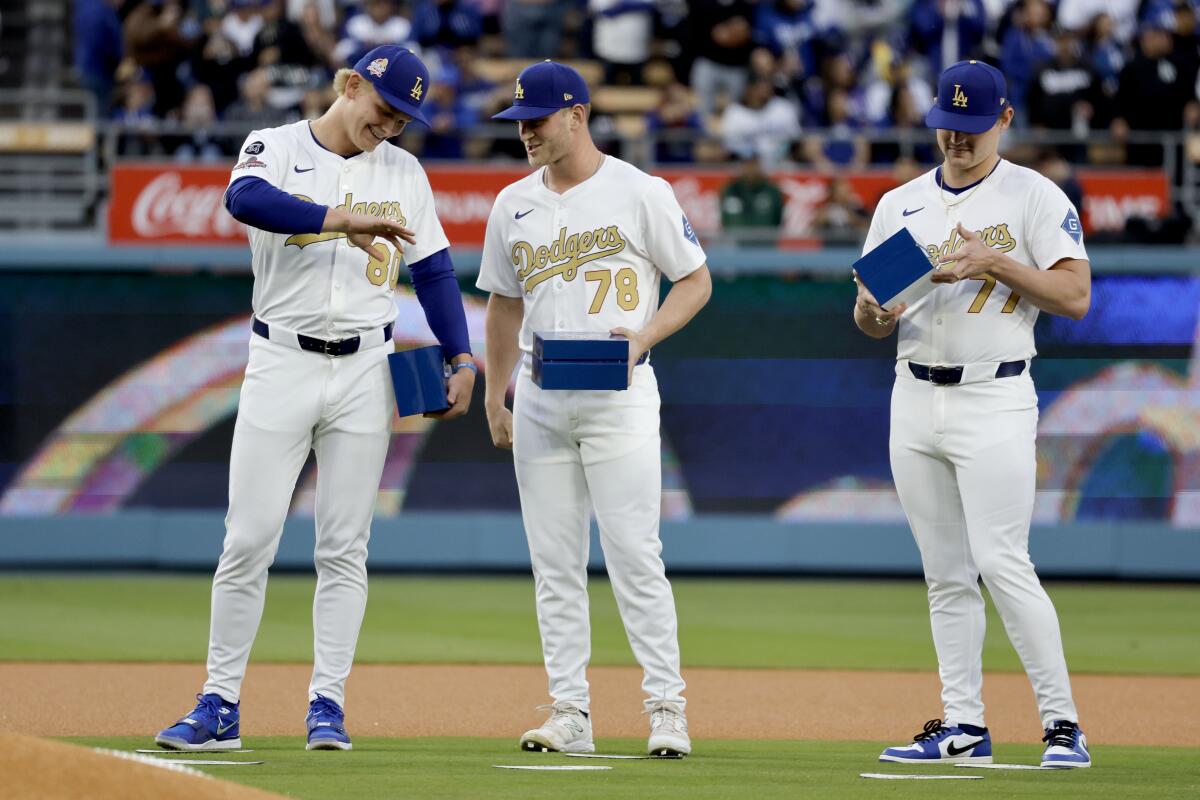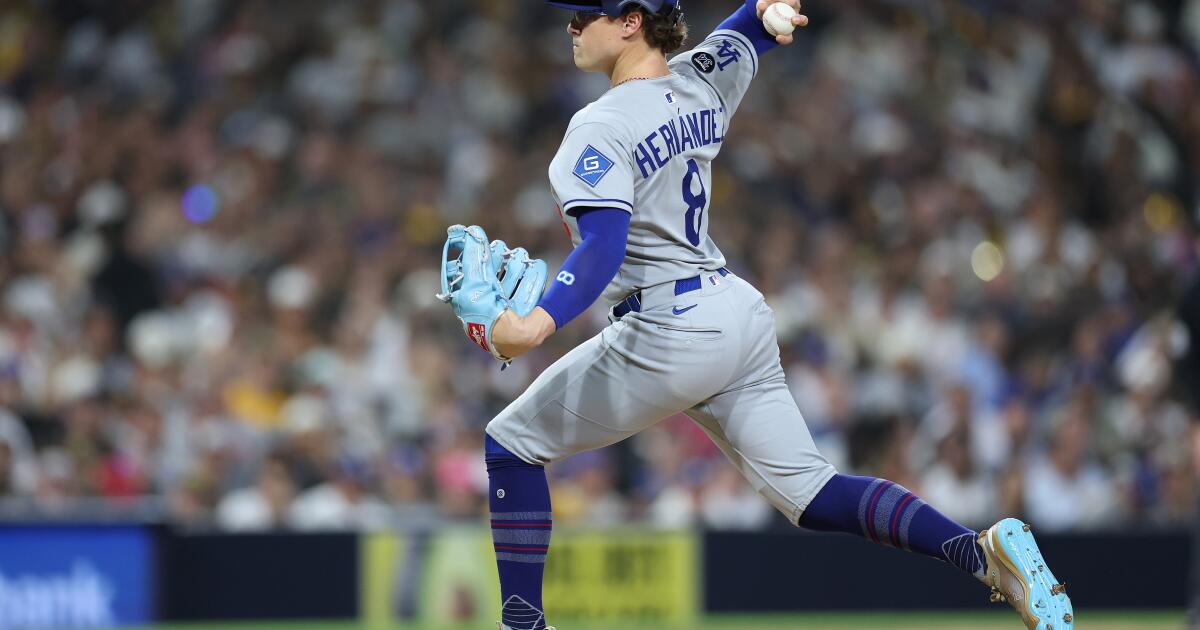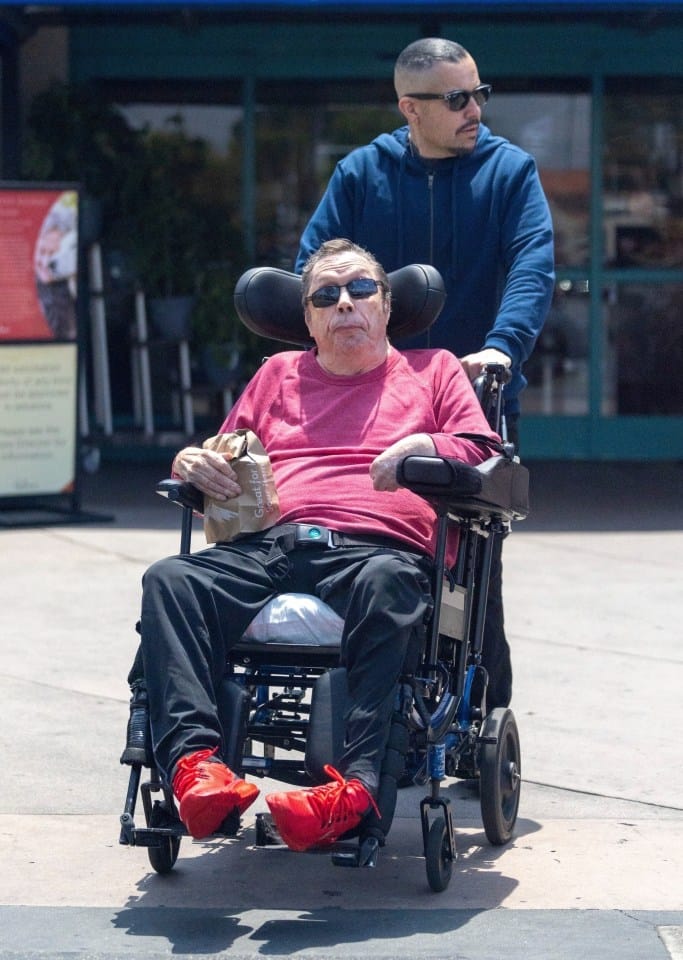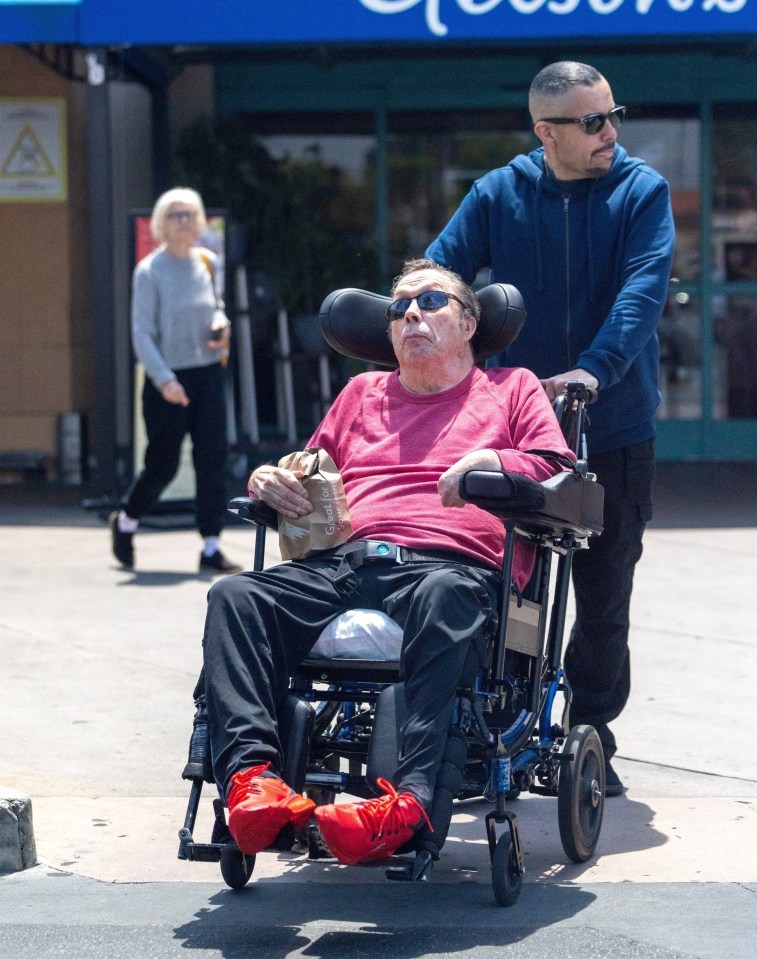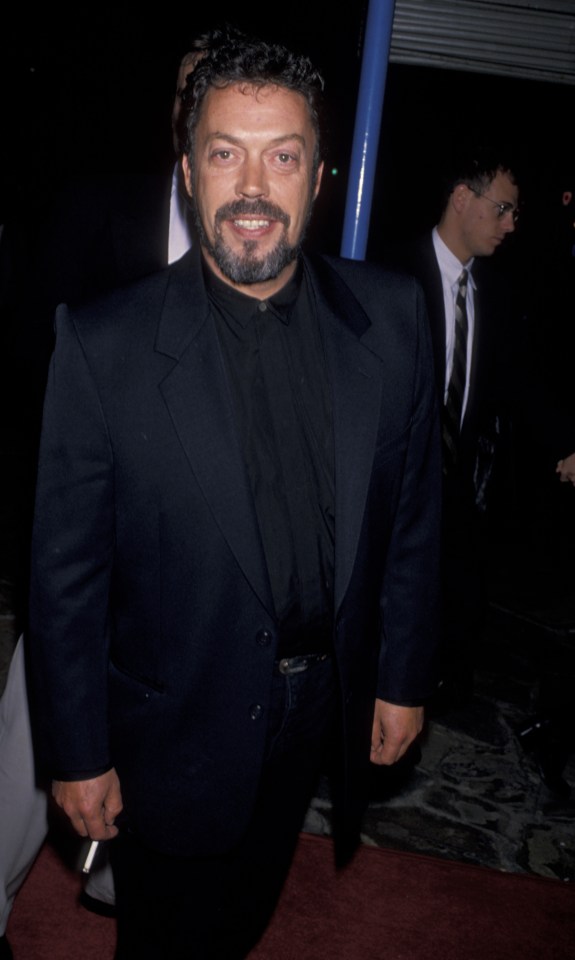Inside Will Klein’s impossible rise to Dodgers World Series hero
You’d be forgiven for not remembering the trade.
On June 2 this year, the Dodgers were in need of pitching help. At the time, their rotation had been ravaged by injuries, and their bullpen was overworked and running low on depth. Thus, the morning after their relievers had been further taxed following a short start from Yoshinobu Yamamoto against the New York Yankees, the Dodgers went out and added a little-known pitcher in a deal with the Seattle Mariners.
Will Klein’s origin story had quietly begun.
Almost five months before becoming a World Series hero for the Dodgers, pitching four miraculously scoreless innings in their 18-inning Game 3 win over the Toronto Blue Jays on Monday night, Klein joined the organization as a largely anonymous face, acquired in exchange for fellow reliever Joe Jacques in the kind of depth transaction the Dodgers make dozens of over the course of each season.
At that point, even Klein couldn’t have foreseen the star turn in his future.
He had a career ERA over 5.00 in the minor leagues. He had struggled in limited big-league action in 2024, battling poor command while giving up nine runs in eight outings. He had already changed organizations three times, and been designated for assignment by the Mariners the day before.
“I woke up to a 9 a.m. missed phone call and a text,” Klein recalled Tuesday. “Found out I was DFA’d. Really low then.”
Now, in the kind of serendipitous turn only October can create, Klein has etched his name into World Series lore.
“I don’t think that will set in for a long time,” he said.
As the last man standing in the Dodgers’ bullpen in Game 3, Klein pitched more than he ever has as a professional, tossing 72 pitches to save the team from putting a position player on the mound.
Afterward, he was mobbed by his teammates following Freddie Freeman’s walk-off home run, then greeted in the clubhouse with a handshake and an accomplished “good job” from Dodgers pitching icon Sandy Koufax.
He had 500 missed messages on his phone when the game ended. He got 500 more as he tried responding to everyone Tuesday morning. His middle school in Indiana, he said, had even hung a picture of him up in a hallway.
“I woke up this morning still not feeling like last night had happened,” he said in a pre-Game 4 news conference. “It was an out-of-body experience.”
A thickly bearded 25-year-old right-hander originally from Bloomington, Ind., Klein’s path to Monday’s extra-inning marathon could hardly have been more circuitous.
In high school, he was primarily a catcher, until a broken thumb prompted him to focus on pitching. When he was recruited to Eastern Illinois for college, his ACT scores (he got a 34) helped almost as much as his natural arm talent.
Dodgers pitcher Will Klein also pitched in the eighth inning of Game 1 in Toronto, allowing no runs.
(Robert Gauthier / Los Angeles Times)
“I’m big into academics,” Eastern Illinois coach Jason Anderson said by phone Tuesday. “If you can figure out science class, you can figure out how to throw a slider.”
Anderson wasn’t wrong. Though Klein was initially raw on the mound, posting a 5.74 ERA in his first two collegiate seasons, he worked tirelessly on improving his velocity, learning how to leverage the power he generated with his long-limbed, 6-foot-5 frame.
As his fastball crept toward triple digits, he started garnering the attention of MLB scouts. Though Klein’s junior season in 2020 was cut short after four outings by the COVID-19 pandemic, he’d shown enough promise in collegiate summer leagues beforehand to get drafted in that year’s fifth and final round by the Kansas City Royals.
Klein’s rise to the major leagues from there was not linear. His poor command (he averaged nearly seven walks per nine innings in his first three minor-league years) hampered him even as he climbed the Royals’ organizational ladder.
Klein reached the big leagues last year, but made only four appearances before being included in a trade deadline deal to the Oakland Athletics. This past winter, after finishing the 2024 campaign with an 11.05 ERA, he was dealt again to the Mariners.
The return in that package? “Other considerations,” according to MLB’s transaction log.
“His whole career has been [full of] challenges,” Anderson said. “He really just needed some time and somebody to believe in him.”
With the Dodgers, that’s exactly what he found.
Long before his arrival, Klein had admirers in the organization. The club’s director of pitching, Rob Hill, was immediately struck by his high-riding heater and mid-80s mph curveball when he first saw Klein pitch in minor-league back-field games during spring training in 2021 and 2022.
“I vividly remember his outings against us in spring training,” Hill said. “I was walking around, asking people, ‘Who is this guy?’ That was my first introduction to him.”
After being traded to the Dodgers, Klein was optioned to triple-A Oklahoma City to work under the tutelage of minor-league pitching coaches Ryan Dennick and David Anderson. There, he started to refine his approach and trust his high-octane arsenal in the zone more. In 22 ⅔ innings, he struck out a whopping 44 batters.
“[He was] never short for stuff,” Anderson told OKC’s team broadcaster at the end of the season. “It was just accessing the zone and forcing action.”
During four stints on the MLB roster over the second half of the year — during which he posted a 2.35 ERA in 14 outings — Klein also worked with big-league pitching coaches Mark Prior and Connor McGuiness on developing a sweeper to give him an all-important third pitch.
“I think our coaches have done a fantastic job of cleaning up the delivery, challenging him to be in the hitting zone, working on a slider,” manager Dave Roberts said. “He’s a great young man. And it’s one of those things that you don’t really know until you throw somebody in the fire.”
The Dodgers didn’t do that initially this October, sending Klein to so-called “stay hot” camp in Arizona for the first three rounds of the playoffs.
But while Klein was there, Hill said it “was very notable how locked in he was” during bi-weekly sessions of live batting practice, with the pitcher “consistently asking for feedback and trying to continue to make sure his stuff was ready.”
During the team’s off week before the World Series, Klein was sent to Los Angeles to throw more live at-bats against their big-league hitters. He promptly impressed once again, helping thrust himself further into Fall Classic roster consideration as the team contemplated ways to shuffle the bullpen.
Still, when Klein learned he would actually be active for the World Series, he acknowledged it came as a surprise.
“I’m just going to go out there,” he told himself, “and do what I can to help all these guys that have worked their butts off.”
After holding his own in a scoreless inning of mop-duty in a Game 1 blowout loss to the Blue Jays, Klein started sensing another opportunity coming as Monday’s game stretched deep into the night.
“I realized that, when I looked around in the bullpen and my name was the only one still there, I was just going to [keep pitching] until I couldn’t,” he laughed.
Every time he returned to the dugout between innings, he told the coaching staff he was good to keep going.
“No one else is going to care that my legs are tired right now,” he said. “Just finding it in me to throw one more pitch, and then throw another one after that.”
Back in Illinois, Anderson was like everyone else from Klein’s past. Awed by how deep he managed to dig on the mound. Moved by a moment they, just like him, could have never foreseen or possibly imagined.
“Everything about him — his mentality, his work ethic, his obstacles, his path — it was like he was destined to be on that field at that time,” Anderson said. “That’s one of the greatest baseball games in history.”
And, against all odds, it was Klein who left perhaps its most heroic mark.



